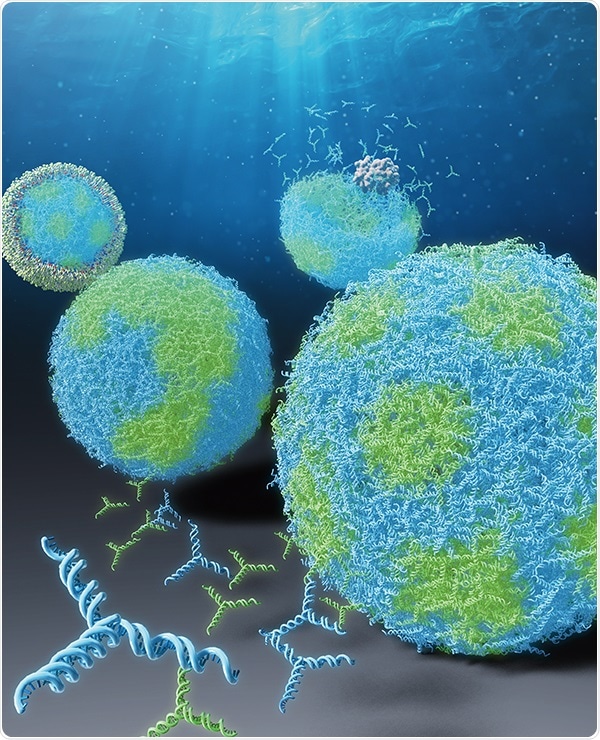Biophysicists from Japan recently identified ways to create and manipulate capsule-like DNA structures that can be employed in the development of artificial molecular systems. These systems can act, for instance, inside the human body.
The research was a collaboration between Yusuke Sato of Tohoku University and Masahiro Takinoue of the Tokyo Institute of Technology (Tokyo Tech). The observations were published in the JACS Au journal.

The DNA microcapsules with patterns made of sequence-designed DNA nanostructures. Image Credit: Yusuke Sato of Tohoku University
To produce the capsules, the scientists first created two distinct kinds of DNA nanostructures. Each type was created with three single-stranded DNA molecules with sticky bits at their ends. Owing to the differences in the DNA sequences, only similar nanostructures were glued together when the two types were combined.
Sato and Takinoue later mixed the nanostructures in solution with an oily mixture of non-charged and charged molecules. The mixture was initially heated and later cooled, and finally analyzed under a microscope.
The scientists observed the formation of water-in-oil droplets, with the DNA nanostructures aggregating at the water-oil interface. The nanostructures are aggregated in various kinds of patch-like patterns, based on the concentration of each type relative to the other.
The researchers also observed that the DNA nanostructures accumulated more homogeneously while adding an extra X-shaped DNA nanostructure to the mix to link the two types together.
This also worked inside lipid vesicles similar to water-in-oil droplets. Sato and Takinoue also separated the DNA capsules from the vesicles and droplets without damaging their capsule-like shapes. Eventually, they could open the capsules and degrade them with specific enzymes.
The observations demonstrate an approach for developing and modifying DNA capsules that can have varied functions and purposes. For instance, they can be employed to deliver substances to specific target organs, releasing their cargo when exposed to specific enzymes.
They can also be made mobile by employing DNA nanostructures that can be manipulated to change the shapes of the capsules, or can be changed with proteins or DNA-based molecular devices to create functional compartmental structures, such as cellular membranes.
Sato and Takinoue stated, “We believe that functional capsules made from DNA, like the ones we have designed, could provide a new approach for developing capsular structures for artificial cell studies and molecular robotics.”
The researchers intend to further examine by introducing various kinds of cargo into the capsules in addition to DNA information processors and discharging them in response to particular stimuli.
Source:
Journal reference:
Sato, Y. & Takinoue, M. (2021) Capsule-like DNA Hydrogels with Patterns Formed by Lateral Phase Separation of DNA Nanostructures. JACS Au. doi.org/10.1021/jacsau.1c00450.